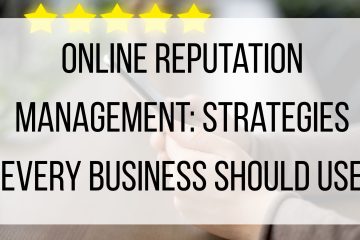How To Run A Competitive Landscape Analysis

In order to be competitive with your business, you have to know what sets you apart. Know your own strengths and weaknesses, and learn what advantages your competition has. Everyone has room to grow, and learning how your competitors draw in their audience is crucial to your own growth. Running a competitive landscape analysis can help you stay one step ahead.
What Is A Competitive Landscape Analysis?
Competitive landscape analysis is the process of analyzing your competitors to better understand them. It focuses on behaviors, strengths, weaknesses, marketing efforts, and behaviors. Recognizing patterns and behaviors in your competitors helps you not only understand how they draw in their audience and what their downfalls are but can help you predict what they are likely to do next.
Why Is Competitive Landscape Analysis Important?
Even if your product or service is fantastic, your competitors might be on-upping you in areas that you don’t even realize. Additionally, they might be making mistakes that are hurting them, and pinpointing those mistakes can help you avoid them. Running competitive landscape analysis allows you to understand what your audience wants and how you can best offer them a solution.
How To Run A Competitive Landscape Analysis:
Start by identifying your competitors. Divide them into two main categories- Direct and Indirect. Direct competitors are those that have a similar business to you and are marketing to the same audience. An example of direct competitors is Coca-Cola and Pepsi. Indirect competitors are those who are similar but offer a slightly different product or service than you. An example of indirect competitors is Coca-Cola and Starbucks. If customers want to treat themselves to a fun drink, a soda, and a coffee both fill that need but fall under two different categories.
Once you have your competitors identified, look at any material they have released. Their website, social media, blog posts, videos, press releases, and photographs are all good places to start. Look at the overall tone of their brand, how frequently they post, and how they interact with their audience. See what customers have to say about them, and take note of what they compliment and what they don’t like. This information can be valuable in helping you craft your own brand.
See how your competitors price their products, and what promotions they run. If several of your competitors are priced well above or below you, you should consider re-pricing your products. If your products seem to be priced too high, customers will look for a better deal. If they are priced too low, they can be perceived as cheap or lower quality. Make sure that your product is in a competitive price range. If your competitors run promotions that their audience looks forward to or talks about on social media, consider running your own special sale!
Find what your competitors say about themselves and what sets them apart. What do they consider their specialty? What do they pride themselves on? Does their audience agree? Every company has something that sets them apart, and knowing what your competitors like to highlight about themselves helps you make sure that you are doing well in that area also.
Keeping track of your competitors is vital to grow your business. Make sure you stay true to your brand, while also getting ideas from others in your field. Be careful of bad-mouthing other companies, and instead highlight what sets you apart for maximum success.



1 Comment
Eggy Car · August 10, 2023 at 9:34 pm
great info, thanks for sharing us.